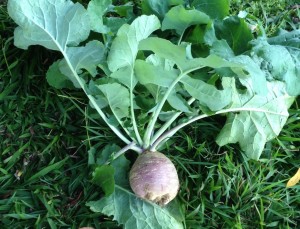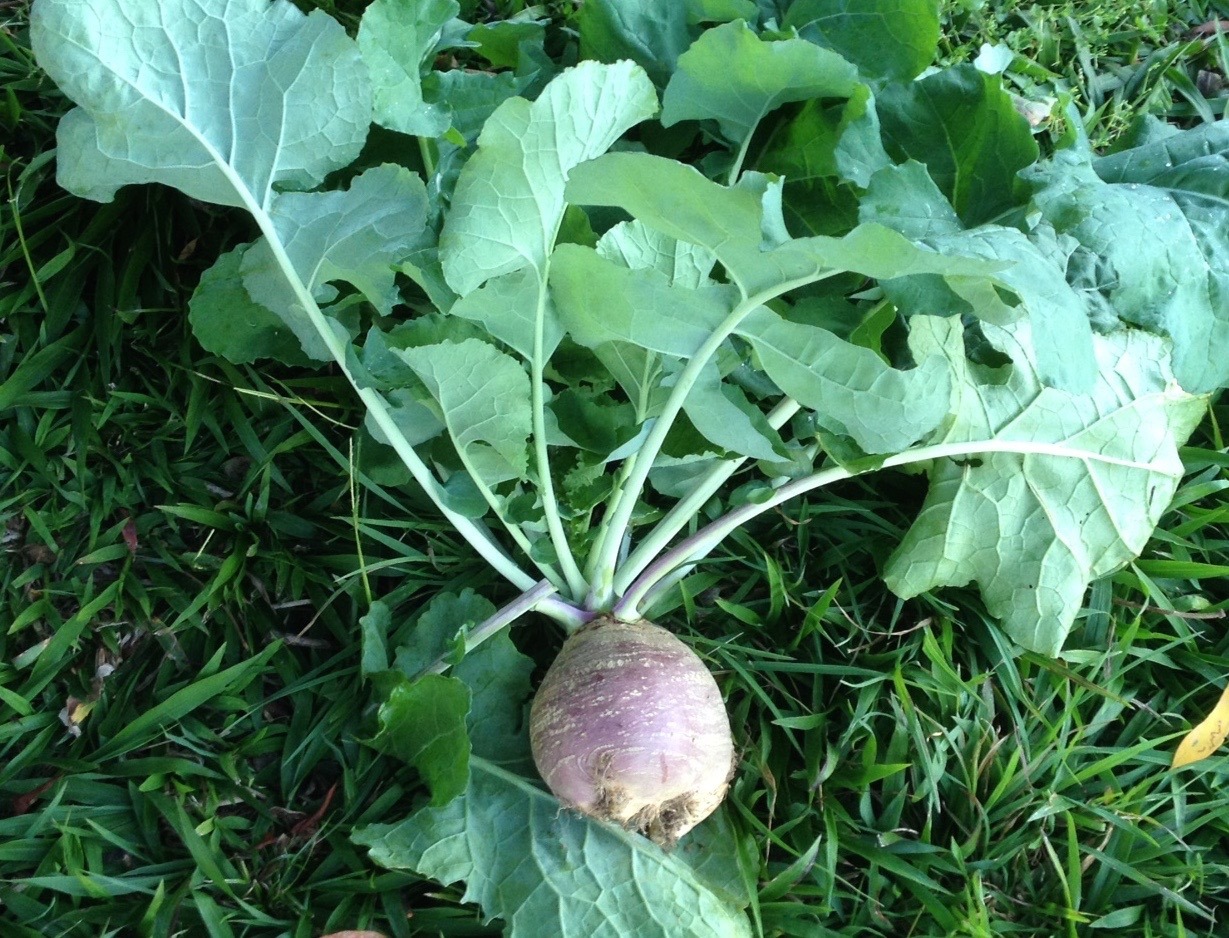Swedes are one of those vegetables that you either love or hate, and with their strong flavour they are probably hated by most kids, but ever since my tastes matured I have been on the side of relishing swedes. It’s the combination of sweetness and depth of mellow flavour that gets me, and says Winter in a mouthful. They are the sort of vegetable that needs to be seasonal, and growing swede in the subtropics is a very seasonal matter, you have to get your timing just right.
Growing swede in the subtropics

With our warm climate, at first I was glad to read that we can actually grow them here, and then impatiently ready well in advance to sow them in March when the warmest of the weather was behind us. Of course the earliest sowing was too optimistic and only two survived, but the first grew to be a picking size by early Winter.
The first ones were a bit bland, probably because I sowed them early while the weather was still warm. My later crop, though, sown and picked in Winter, were tasty and worth having in the repertoire. I think they probably need a proper frost or two, though, to be at their most flavoursome.
Their saving grace for us is that they are trouble free. I can sow them in Winter, direct in a well prepared bed, thin out any seedlings that are too close together, and then just leave them until we feel like having them in a meal. They sit happily, ready to pick, for a few weeks, so are part of the Winter ‘in-ground larder’.
What to do with them in the kitchen? I can still taste in my memory how our family lamb stews were underscored by the just-right flavour of swede when we were kids, but we get to have them so seldom that just boiled and buttered presents them at their best.

